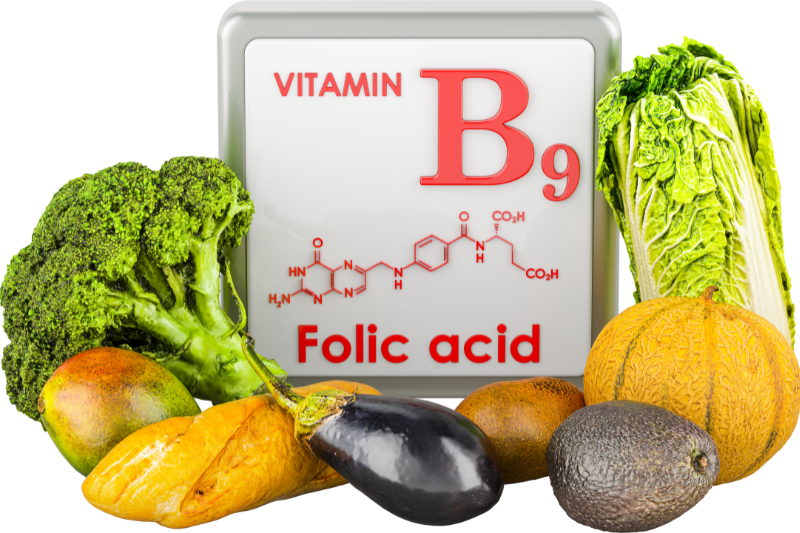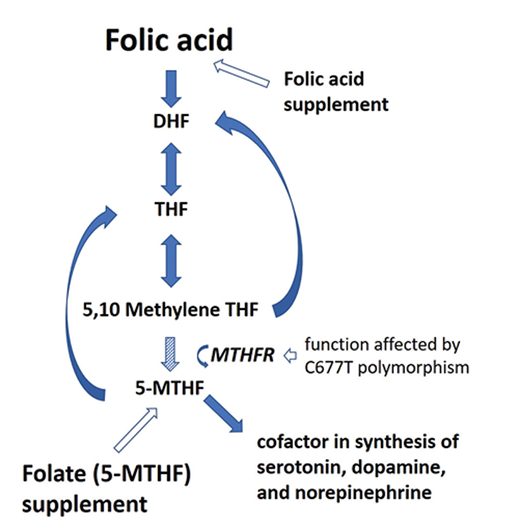
You may have heard discussions about a B vitamin therapy showing promise for individuals with autism. This has created both excitement and confusion, especially regarding different forms of the vitamin available as supplements or prescriptions. This article will clarify the science behind this approach and explain how a targeted nutritional therapy can make a difference for some people with autism.
Folate (Vitamin B9) is an essential nutrient for brain development and function. It plays a critical role in producing neurotransmitters (the brain's chemical messengers), building DNA, and maintaining healthy brain cells.
However, for folate to do its job, it must first be transported from the bloodstream into the brain. This transport is managed by special proteins called folate receptors, which act like gates into the brain cells.
In a significant portion of individuals with autism—some studies suggest up to 70%—the immune system mistakenly attacks these gates. It creates folate receptor autoantibodies (FRAAs) that block or disable the receptors. This results in a condition called Cerebral Folate Deficiency (CFD), where the brain is starved of folate even if blood levels are normal. This deficiency can disrupt brain function and contribute to developmental delays and features associated with autism.
The FDA recently approved a prescription drug called Leucovorin for the treatment of CFD. Because CFD is an underlying issue in many with autism, this therapy is now being used to address their symptoms.
The type of B vitamin used is incredibly important. Not all forms of folate are created equal, and using the wrong one can be ineffective. Let's use an analogy of baking a cake:
In the diagram below, you can see how folic acid requires various steps to be converted into final usable form (5-MTHF). Folinic acid fits in right after the THF step, so it is closer to the final 5-MTHF state. And methylfolate is readily usable.

Stengler M. (2021).
For individuals with folate receptor antibodies, folinic acid (Leucovorin) is the form recommended by the FDA based on research. However, nutritionally trained doctors often use methylfolate as well.
What Does the Research Show?
This is an active area of scientific investigation. For example, a 2024 randomized controlled trial published in the European Journal of Pediatrics demonstrated that oral folinic acid supplementation provided significant benefits for children with autism spectrum disorder, improving communication and social interaction skills compared to a placebo.
The Bigger Picture: A Piece of a Larger Puzzle
While folinic acid therapy is a groundbreaking medical treatment for those with CFD, it is not a "one-shot cure" for autism. Autism is a complex condition with many contributing factors.
This therapy is a powerful example of an integrative approach, where a specific biological issue is identified and treated. The best outcomes are often achieved through a comprehensive plan that addresses multiple factors, including:
If you suspect this issue may be relevant to someone in your care, it is essential to work with a knowledgeable doctor. Neurologists, developmental pediatricians, or integrative doctors specializing in autism can perform the necessary tests to check for folate receptor antibodies and determine if this therapy is appropriate. Leucovorin is a prescription medication, and dosing must be carefully managed by a qualified medical professional.
References
FDA (2025). FDA takes action to make a treatment available for autism symptoms. U.S. Food and Drug Administration. https://www.fda.gov/news-events/press-announcements/fda-takes-action-make-treatment-available-autism-symptoms
Panda, P. K., Sharawat, I. K., Saha, S., Gupta, D., Palayullakandi, A., & Meena, K. (2024). Efficacy of oral folinic acid supplementation in children with autism spectrum disorder: A randomized double-blind, placebo-controlled trial. European Journal of Pediatrics, 183(11), 4827–4835. https://doi.org/10.1007/s00431-024-05762-6
Stengler M. (2021). The Role of Folate and MTHFR Polymorphisms in the Treatment of Depression. Alternative therapies in health and medicine, 27(2), 53–57.